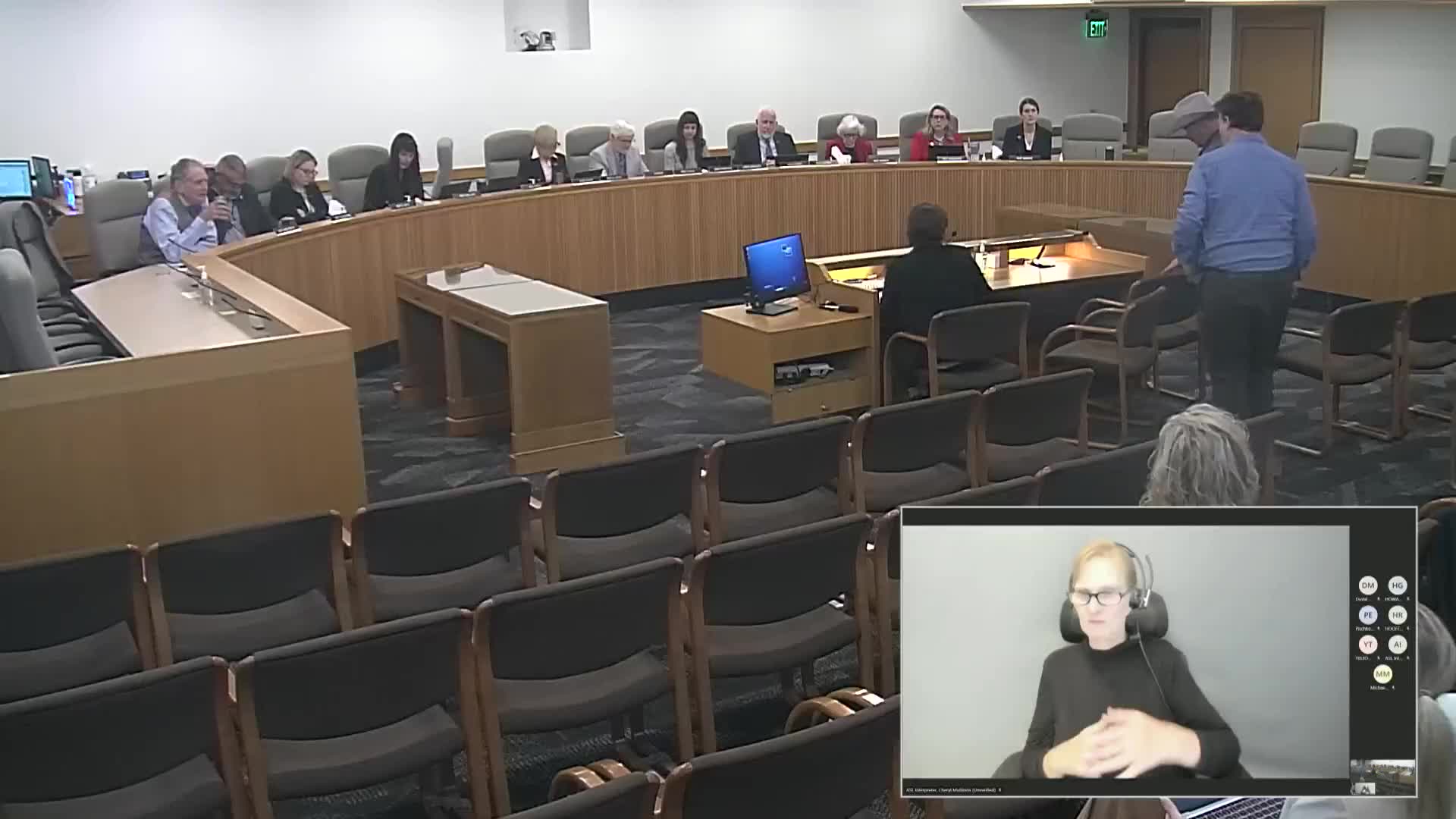Agrivoltaics task force proposed to study co‑location of solar and farming in Oregon
March 18, 2025 | Climate, Energy, and Environment, House of Representatives, Committees, Legislative, Oregon
This article was created by AI summarizing key points discussed. AI makes mistakes, so for full details and context, please refer to the video of the full meeting. Please report any errors so we can fix them. Report an error »

Supporters of agrivoltaics told the House Climate, Energy and Environment Committee on March 18 that colocating solar panels and agricultural production could increase land‑use efficiency, provide farmers new revenue streams and in some cases improve crop or livestock outcomes, but that state policy and permitting clarity are needed before the approach can scale in Oregon.
Representative Catherine Duvall testified on behalf of Senator Michael Dembrow and introduced House Bill 2063. HB 2063 would establish an 11‑member agrivoltaics task force, staffed by the Department of Land Conservation and Development (DLCD), required to report to the legislature by Dec. 15, 2026 and to sunset on Dec. 31, 2026.
OSU researcher Chad Higgins, who leads agrivoltaics demonstrations at Oregon State University’s North Willamette Agricultural Research Station, described agrivoltaics using the federal farm bill definition — integrated solar energy production and agricultural production on the same land throughout the project duration. Higgins said his decade of research shows agrivoltaics can relieve “light stress” on crops, produce measurable increases in yield or nutritional content for some crops, reduce irrigation needs and, in some designs, allow more efficient energy production from the array as well. He said designs can keep about 95% of land accessible to mechanized equipment in recommended configurations.
Farmer John Langdon, a fourth‑generation grower in Harrisburg, testified that agrivoltaics offers “innovation dollars” enabling experimentation and farm investment. Industry and nonprofit witnesses — including Oregon Solar and Storage Industries Association (OSEA), Renewable Northwest and Oregon Clean Power Cooperative — described demonstration projects already operating in Oregon and abroad, and recommended the task force examine permitting, siting, impacts on high‑value farmland, project size and mechanisms to ensure farming remains the primary use where agrivoltaics are sited.
Multiple witnesses noted current Oregon land‑use rules limit agrivoltaics on high‑value soils, and that existing processes such as Energy Facility Siting Council (EFSC) approvals or exceptions can be costly and lengthy. Several witnesses suggested the task force consider interconnection challenges, siting incentives, and whether some agrivoltaic configurations could be allowed by right in some locations. Testimony included examples: Oregon Clean Power Cooperative described community agrivoltaic projects in Aurora and Sherwood, including a microgrid on high‑value farmland that would not be allowed under current rules if connected directly to the grid.
1000 Friends of Oregon said it was neutral on the bill and urged careful member selection for the task force, suggesting including conservation district and American Farmland Trust representation. OSEA urged the task force be centered in the Oregon Department of Energy rather than DLCD to align with the department’s energy‑focused mission; Renewable Northwest emphasized the potential to increase land‑use efficiency and attract private capital when the policy pathway is clear.
HB 2063 was heard but not voted on March 18; committee members asked witnesses to consider interconnection, scale, and land‑use protections in the task force’s scope if enacted.
Representative Catherine Duvall testified on behalf of Senator Michael Dembrow and introduced House Bill 2063. HB 2063 would establish an 11‑member agrivoltaics task force, staffed by the Department of Land Conservation and Development (DLCD), required to report to the legislature by Dec. 15, 2026 and to sunset on Dec. 31, 2026.
OSU researcher Chad Higgins, who leads agrivoltaics demonstrations at Oregon State University’s North Willamette Agricultural Research Station, described agrivoltaics using the federal farm bill definition — integrated solar energy production and agricultural production on the same land throughout the project duration. Higgins said his decade of research shows agrivoltaics can relieve “light stress” on crops, produce measurable increases in yield or nutritional content for some crops, reduce irrigation needs and, in some designs, allow more efficient energy production from the array as well. He said designs can keep about 95% of land accessible to mechanized equipment in recommended configurations.
Farmer John Langdon, a fourth‑generation grower in Harrisburg, testified that agrivoltaics offers “innovation dollars” enabling experimentation and farm investment. Industry and nonprofit witnesses — including Oregon Solar and Storage Industries Association (OSEA), Renewable Northwest and Oregon Clean Power Cooperative — described demonstration projects already operating in Oregon and abroad, and recommended the task force examine permitting, siting, impacts on high‑value farmland, project size and mechanisms to ensure farming remains the primary use where agrivoltaics are sited.
Multiple witnesses noted current Oregon land‑use rules limit agrivoltaics on high‑value soils, and that existing processes such as Energy Facility Siting Council (EFSC) approvals or exceptions can be costly and lengthy. Several witnesses suggested the task force consider interconnection challenges, siting incentives, and whether some agrivoltaic configurations could be allowed by right in some locations. Testimony included examples: Oregon Clean Power Cooperative described community agrivoltaic projects in Aurora and Sherwood, including a microgrid on high‑value farmland that would not be allowed under current rules if connected directly to the grid.
1000 Friends of Oregon said it was neutral on the bill and urged careful member selection for the task force, suggesting including conservation district and American Farmland Trust representation. OSEA urged the task force be centered in the Oregon Department of Energy rather than DLCD to align with the department’s energy‑focused mission; Renewable Northwest emphasized the potential to increase land‑use efficiency and attract private capital when the policy pathway is clear.
HB 2063 was heard but not voted on March 18; committee members asked witnesses to consider interconnection, scale, and land‑use protections in the task force’s scope if enacted.
View full meeting
This article is based on a recent meeting—watch the full video and explore the complete transcript for deeper insights into the discussion.
View full meeting
